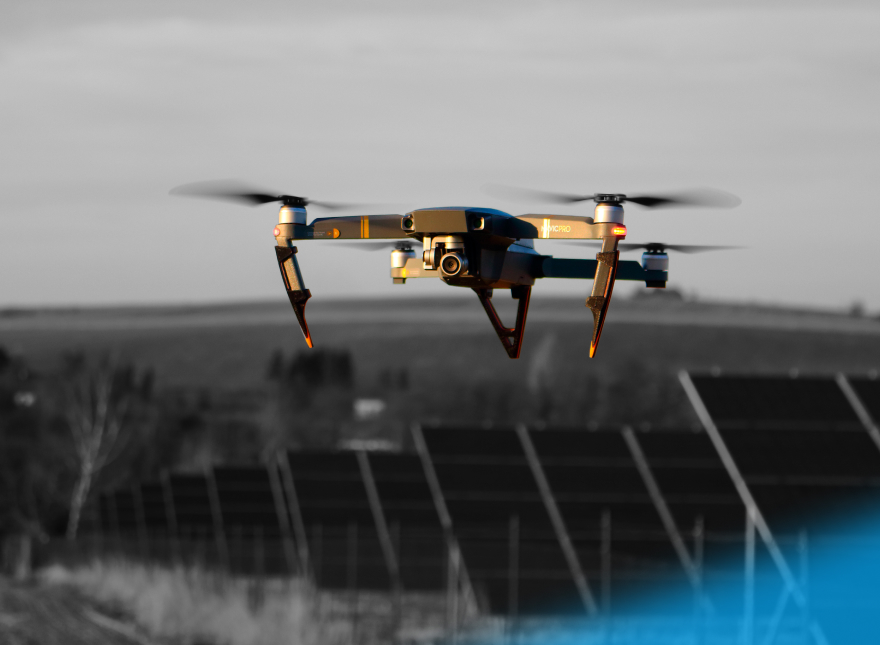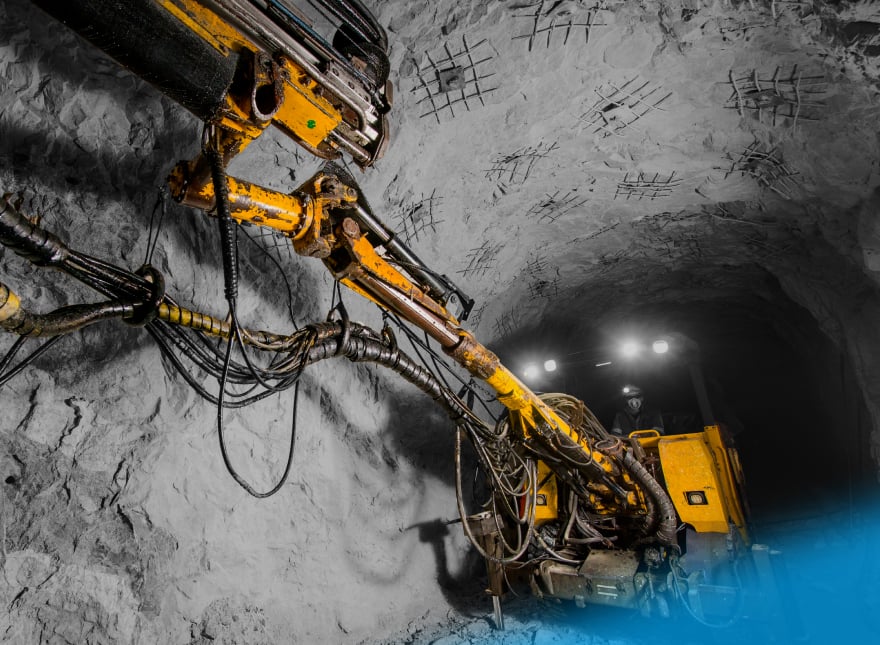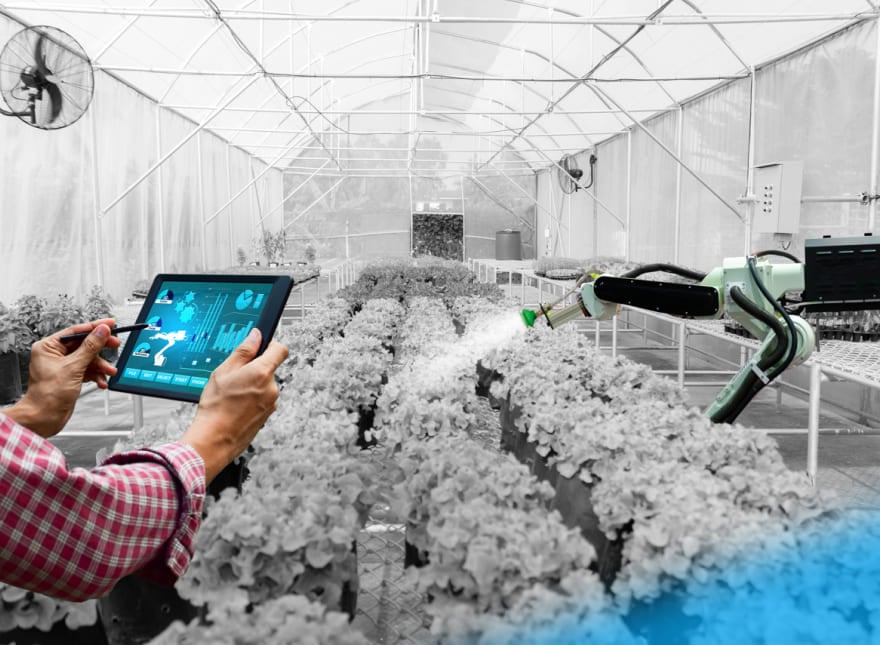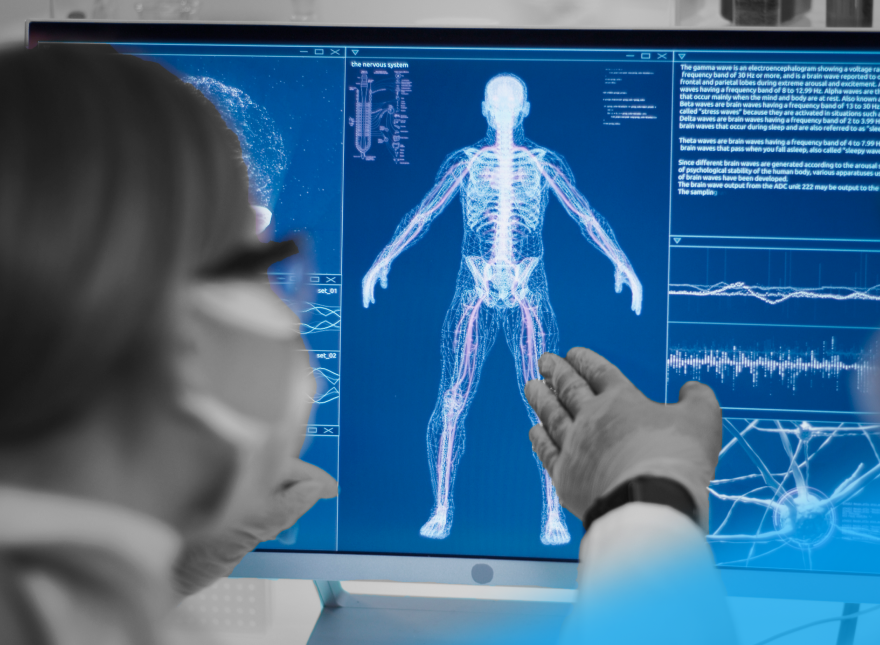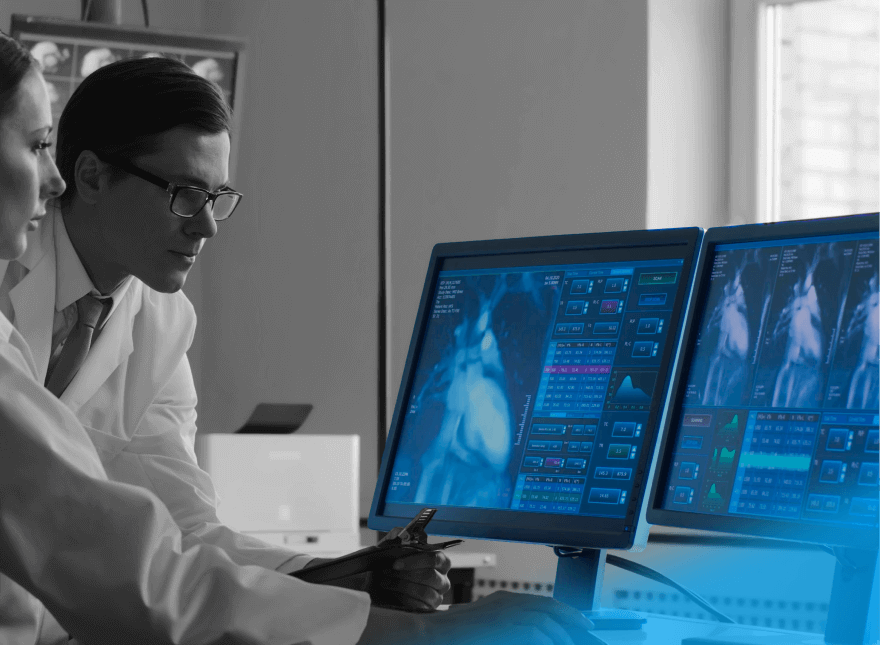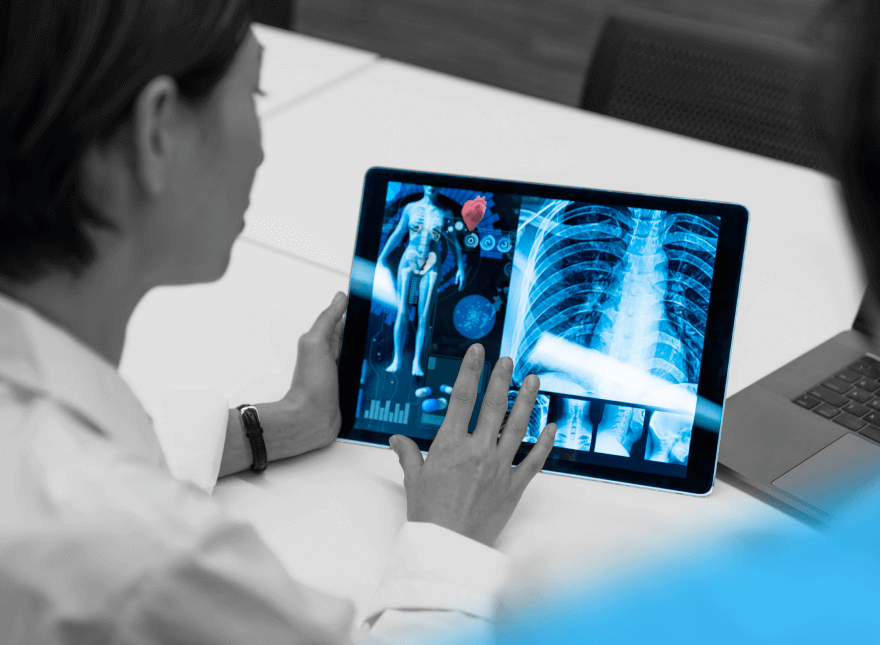Augmented Reality in Energy and Utilities: Use Cases with Real-Life Examples
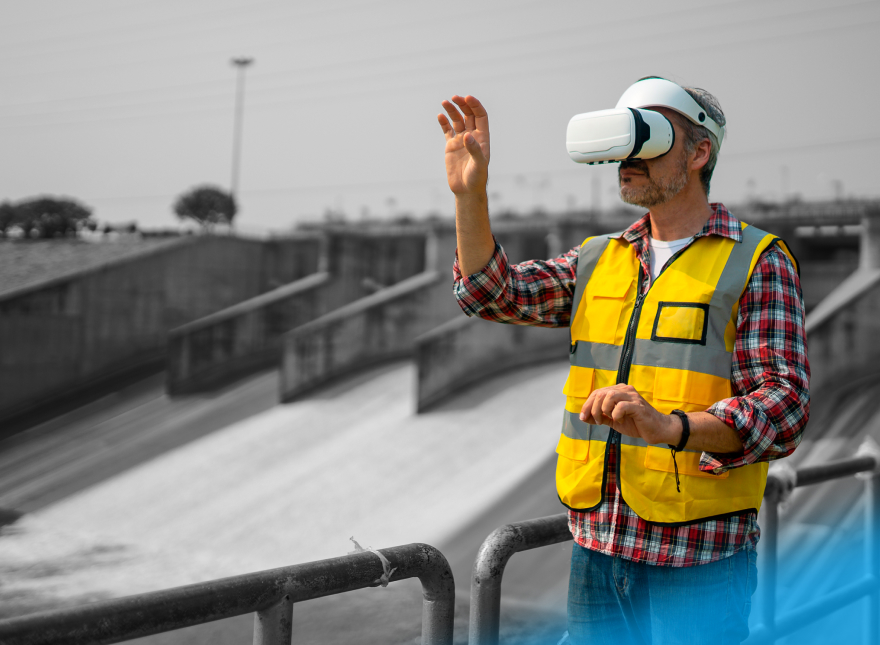
Utility businesses bustle with tasks that put pressure on engineering teams. For example, to complete wiring insertion, companies send their technicians on site. They take paper manuals containing step-by-step guidelines. On average, it takes a full working week to complete this work.
GE Renewable Energy conducted an experiment to see if it could be done faster. They equipped half of their engineering team with smart augmented reality (AR) glasses and sent them to insert new wires in wind turbines. The remaining half only took paper manuals. The group using AR glasses handled the task twice as fast, were more accurate, and made fewer mistakes.
In this article, we’ll talk about how AR for businesses can enable these improvements. Check out how this technology works, along with three real-world use cases of augmented reality in the energy and utilities industry.
Table of Contents
How Does AR Work in the Energy and Utilities Industry?
AR enhances a real environment with computer-generated digital objects. These include sounds, videos, and graphics. To view them, users need a camera-equipped device like a smartphone, tablet, or AR glasses. When the user points the device at a real object, the technology overlays digital elements on top of them.
As a result, the user can see and manipulate objects that aren’t actually here.
To better understand how AR works, let’s consider utility mapping. This is the process of creating a detailed map of the pipes, lines, and cables beneath the ground at a particular site. Having such a comprehensive map helps engineers avoid damaging lines while digging.
Augmented reality for utility mapping gives a helping hand. Here’s how it works:
- Gathering data. Data on utility lines is gathered from on-site surveys, satellites, GPS-based systems, or LiDAR-equipped drones.
- Uploading data. Then, the data is uploaded to a geographic information system (GIS). GIS processes and records data and connects it to a map.
- Integrating AR into the map. Now, the existing utilities are displayed as 3D objects. This provides on-site workers with data on the exact location of pipes and lines.
- Accessing the data through a tablet or phone screen. Users just need to point the screen down at the ground and see where it’s safe to dig. Off-site workers can find all the necessary information on the location of utilities on the maps instead of searching for it on paper maps, which can be outdated or inaccurate.
So, augmented reality in utility mapping helps save time and avoid costly mistakes and delays. Operators will always know where utility lines are situated underground with digital maps, meaning they won’t damage the lines.
These benefits make the technology attractive for utilities companies, and they are actively starting to use AR. Experts predict that the global AR market in the energy sector will grow. In 2023, the industry is expected to account for one-fifth of the worldwide share of AR hardware shipments.
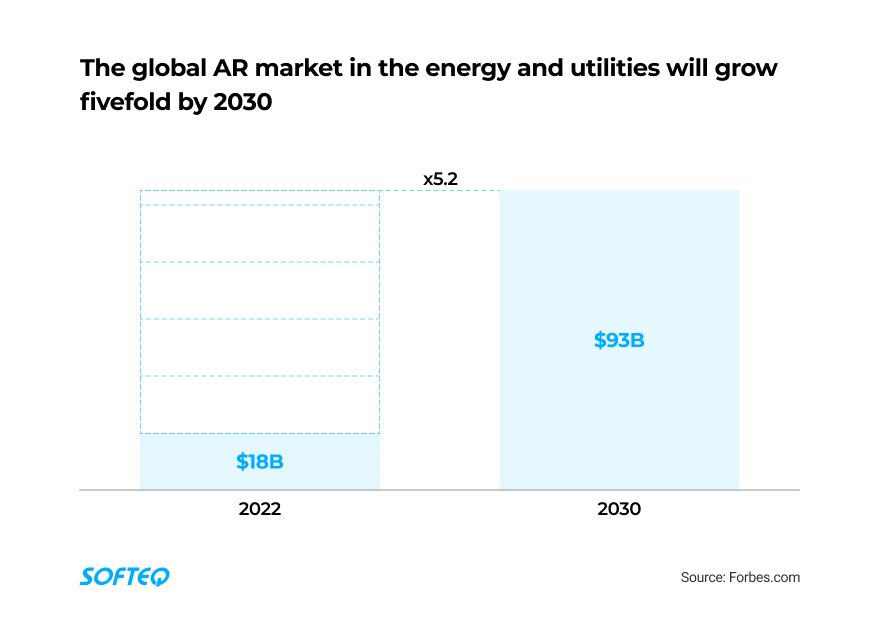
Now, let’s consider business use cases of augmented reality in the energy and utilities sector and their real-life examples.
Use Case 1. AR to Arrange Employee Training
Utility business managers voice their concerns—soon, there will be no professionals to hire. The US Department of Energy found that one in four workers in the sector will retire by 2027. This workforce is hard to replace: newcomers lack the necessary training and technical knowledge. As a result, staff shortages bring financial losses, reduce efficiency, and hinder a company’s growth. To combat this, businesses are looking for ways to improve their training processes.
Companies usually arrange their training offline. This means that skilled engineers conduct sessions with trainees on site. However, this is getting harder due to the lack of personnel. Such sessions take time and distract professionals from their main duties.
AR for training can improve the learning process. The technology allows for real-time, immersive training where professional engineers don’t have to be present. Junior engineers can use pre-drawn AR programs for independent study.
For example, AR-based training platforms can show engineers a piece of equipment’s parts and inner structure plus how to use it.
The technology is also useful if newcomers have work issues and need more skilled colleagues to get involved. For example, junior staff can use AR headsets to get remote guidance from experienced colleagues. This way, skilled engineers can see what their junior colleagues are seeing, helping them resolve a technical issue in real time.
Real-Life Example: Enabling Interactive Training for New Hires
A tech company, NSFLOW, offers an AR solution to accelerate onboarding and training. It consists of two modules: digital workflows and remote support. The first module helps create interactive training, instructions, and service procedures. The second is responsible for connecting your field technicians with remote experts.
DTE Energy, US, uses the platform to create interactive training sessions and instructions for new employees. Newcomers can use the platform for self-study. AR training like this takes place without the presence of an instructor.
New recruits can also connect with experts who are located far away via real-time calls. The experts can view images from the cameras in the new technician’s AR glasses. Then, the expert can guide the trainee and give technical advice. This makes all onboarding and training courses easier and more convenient. Pro experts, in turn, don’t need to spend as much time traveling and conducting offline meetings. Instead, they can focus on their own tasks.
Benefits:
- Cheaper onboarding and training. Once a course has been created, managers can share it with all their employees. There are no extra costs for tutors and training materials.
- No need for an instructor to be physically present. Thanks to AR, practically all courses can take place without a teacher actually being there.
- Time savings. AR remote assistance saves a lot of time for experts as they can travel less and serve multiple locations a day. It also means that junior employees don’t have to wait for them, which helps avoid work stoppages.
Use Case 2. AR to Speed Up Equipment Maintenance
In the US energy sector, 3% of working days each year are lost due to faulty machines. This might not sound like much, but it translates into $30 million in financial losses per company. It can also affect electricity consumers, since electric equipment failures can cause power outages capable of shutting down a whole city.
Here’s how AR can help in equipment maintenance:
- Quickly detecting areas that need maintenance. AR helps overlay a 3D model onto a piece of equipment. Using AR glasses, operators can see how the equipment should work and what needs to be maintained.
- On-hand access to expert knowledge. With AR, technicians can access all service documentation and manuals on their tablets.
- Connecting field workers with remote experts. Leveraging AR, on-site technicians can arrange audio and video calls with remote experts. This means they get the necessary guidance immediately and solve any task without losing time.
Real-Life Example: Servicing Utility Equipment
Minnesota-based Xcel Energy Inc has recently tried AR in their day-to-day maintenance activities. Their goal was to simplify processes, speed them up, and minimize errors. Using AR, operators can reach remote experts via video calls and read user manuals for any maintenance task. They can also access all recorded maintenance history, which is presented in a convenient way. As a result, the company managed to reduce downtime by 60%.
Benefits:
- Faster equipment maintenance. With AR, businesses can reduce maintenance time by half.
- Fewer human errors. The technology allows engineers to do accurate calculations and predict outcomes. It reduces the number of errors by a third.
- Improved fix rates. Using AR, technicians can order spare parts and share 3D visualizations with remote experts. This increases fix rates by a fifth.
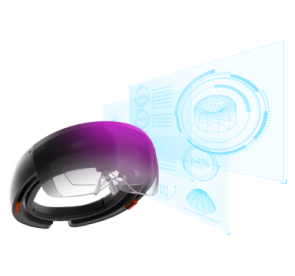
Use Case 3. AR to Improve Health and Safety
Energy specialists work in extreme conditions. First, they operate dangerous and high-risk equipment and tools. Risks include getting crushed between moving parts, being run over by a heavy machine, or being poisoned by harmful equipment emissions. Second, they work in hard-to-reach places, often at high altitudes. This increases the risk of getting injured from falling, especially for those workers with little to no experience.
AR for safety helps energy companies minimize these risks. For example, engineers can detect faulty equipment sooner when they use AR headsets.
AR overlays a 3D model onto a piece of equipment so that specialists can see problem areas in real time. Resolving the issue as soon as possible means reducing the risk of injury.
AR technology can also map danger zones. Smart glasses highlight danger spots and provide a detailed description of them, helping engineers to avoid risky areas. AR glasses can also display safety regulations and guidelines, educating technicians on how to operate in dangerous conditions. Fewer accidents occur as a result.
Engineers may need urgent help if a problem escalates quickly. AR solutions can allow engineers to contact skilled experts via video call. This instant access to help reduces the risk of workers making a mistake when fixing equipment. These consultations also mean fewer people need to visit hazardous, hard-to-reach locations. Businesses can keep their workers safe and incur less expense for sick leave pay and staff replacement as a result.
Real-Life Example: Enhancing Worker Safety
Since 2020, Siemens Energy has been using AR to connect their on-site workers with remote experts. The company had difficulty efficiently maintaining and inspecting its equipment on a regular basis. This work was performed in hard-to-reach areas, which posed risks to workers.
With AR, Siemens engineers can remotely inspect, diagnose, and maintain their industrial equipment. It has resulted in faster resolution time and increased productivity. Plus, of course, it also boosts worker safety—Siemens Energy managed to reduce the frequency and number of accidents and injuries by 43%.
Benefits:
- Increased safety. AR means that workers can perform tasks without being exposed to real danger.
- Fewer injuries. By incorporating AR, companies can significantly reduce the occurrence of injuries as workers don’t have to travel to hard-to-reach areas.
- Cost savings. Fewer injuries and less travel mean costs are kept in check.
To Sum Up
The energy and utilities sectors were considered slow to adopt disruptive technologies. For decades, they have relied on traditional, non-digital ways of completing their operations.
But now we see that more and more businesses are starting to apply AR in their operations. Some companies are using the technology to make staff training more efficient. Others are arranging equipment maintenance more cost-effectively. AR can also improve the safety and health of workers.
If you’re planning an AR solution that can also offer these benefits, turn to Softeq. Our AR experts are ready to help you with projects of any complexity. Contact us today to learn how we can bring your idea to life.
More articles on the topic
